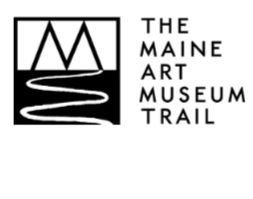Birchbark Canoe Build at the Abbe Museum!
/ From
August 12 through September 6, from 10:00 am to 5:00 pm Monday through Friday,
the Abbe Museum will host an artist-in-residence program featuring the building
of a full-sized birchbark canoe the first time one has been built on MDI in
almost 100 years. David Moses Bridges,
Passamaquoddy, and Steve Cayard, both skilled builders of birchbark canoes in
the Wabanaki tradition, harvested the materials and will be building a 14’
canoe as a public demonstration. The
canoe will become part of the teaching collection at the Abbe Museum, able to
travel to schools and public programs outside of the building, and to be
paddled during demonstrations.
From
August 12 through September 6, from 10:00 am to 5:00 pm Monday through Friday,
the Abbe Museum will host an artist-in-residence program featuring the building
of a full-sized birchbark canoe the first time one has been built on MDI in
almost 100 years. David Moses Bridges,
Passamaquoddy, and Steve Cayard, both skilled builders of birchbark canoes in
the Wabanaki tradition, harvested the materials and will be building a 14’
canoe as a public demonstration. The
canoe will become part of the teaching collection at the Abbe Museum, able to
travel to schools and public programs outside of the building, and to be
paddled during demonstrations.
Steve
is a birchbark canoe builder by trade and by calling, and David is a birchbark
artist, who is well known for his beautiful etched bark baskets. While working
in boatyards in mid-coast Maine in the early 90s, Bridges and Cayard met and
discovered a shared passion for birchbark canoes. Bridges apprenticed with
Steve in the late 1990s to learn canoe building in honor of his
great-grandfather, Sylvester Gabriel, who was one of the last old-time Wabanaki
canoe builders. David and Steve have since collaborated on a number of
birchbark canoe projects including the 16’ canoe featured in the Abbe’s
Gathering Gala this year. They began working together on various projects,
teaching and learning from each other.
Through their
combined experience, they have collectively built more than 50 birchbark canoes
over the years.
Wabanaki
birchbark canoes are the result of thousands of years of travel on the inland
and marine waterways of what is now called northern New England and the
Maritimes. They developed a watercraft based on a deep knowledge of the forest
and its materials, and of the demanding local conditions. The result was a
canoe that was so well designed that it was copied with almost no modification
by the first wood and canvas canoe builders around the turn of the last
century. The Wabanaki canoe is thus the ancestor of all modern canoes. The
canoe you will see built at the Abbe represents an old style, which in common
use among most of the Wabanaki tribes prior to the 1870s. Building a birchbark
canoe is long-term commitment. About 200 hours of time in the woods are
required to find and gather the necessary materials, and then it takes about
500 hours to build the boat. Bark harvested in either the summer or winter may
be used for the skin of the boat, depending on the preference of the builder. The
interior of the boat is made with cedar planking and ribs, and secured with the
roots from a spruce tree. The bark is
naturally waterproof, and the seams are sealed with a mixture of pine pitch and
animal fat, painted on to prevent leaking.
The boats are made of one sheet of bark, about ¼ inch thick. Peeling the bark does not kill the tree, but
it will never grow bark of high enough quality to build another boat.
Wabanaki
people have been building birchbark canoes for thousands of years. Based on archaeological evidence, it is
estimated that these canoes replaced dugout canoes about 2,500 years ago. By the early 1900s few canoe builders were
left, and there was a real risk that the knowledge and skill required to build
these boats would be lost. Through
extensive research and collaboration between boat builder Steve Cayard,
Wabanaki tribes, and other canoe enthusiasts, the craft is enjoying resurgence.
The
canoe-build is free with museum admission and is offered in connection with Wabanaki Guides, an exhibit at the Abbe
that chronicles the history of guiding visitors through Maine, from the time of
European contact to present, and features two birchbark canoes. The canoe-build
is made possible by a gift from Donna and David Reis.






